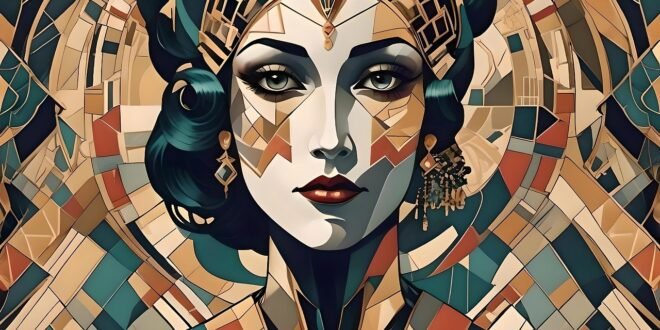Contemporary art, a term that encompasses a wide range of artistic expressions and practices from the late 20th century to the present, has become a dynamic and ever-evolving field. This article delves into the evolution of contemporary art, highlighting key trends, influential movements, and the socio-political contexts that have shaped its trajectory.
Understanding Contemporary Art
Contemporary art is characterized by its diversity and variety. Unlike earlier art movements that often adhered to specific styles or ideologies, contemporary art encompasses a multitude of forms, materials, and concepts. It is not confined to traditional mediums like painting and sculpture; instead, it embraces photography, video, installation, performance, and digital art. This fluidity allows artists to respond to the complexities of modern life, making contemporary art a reflection of our current society.
Key Characteristics of Contemporary Art
- Conceptual Focus: Many contemporary artists prioritize ideas and concepts over traditional aesthetics. The message behind the artwork often takes precedence over its visual appeal.
- Interdisciplinary Approaches: Contemporary art frequently intersects with other disciplines, including politics, sociology, technology, and philosophy. This interdisciplinary nature encourages artists to explore a wide range of themes and issues.
- Global Perspective: Contemporary art is no longer confined to Western perspectives. Artists from diverse cultural backgrounds contribute to a global art scene, enriching it with varied experiences and narratives.
- Audience Engagement: Contemporary artists often seek to engage their audiences actively. This can involve participatory art, where viewers are invited to contribute to the work, or art that challenges viewers to reflect on their own experiences and beliefs.
Historical Context
The evolution of contemporary art can be traced back to the mid-20th century when movements such as Abstract Expressionism, Pop Art, and Minimalism began to emerge. Each of these movements laid the groundwork for contemporary practices by challenging traditional notions of art.
Abstract Expressionism (1940s-1950s)
Emerging in the post-World War II era, Abstract Expressionism marked a shift towards individual expression and emotional intensity. Artists like Jackson Pollock and Mark Rothko rejected representational art, opting instead for abstraction that conveyed their inner experiences. This movement emphasized spontaneity and the act of painting itself, laying the groundwork for later conceptual approaches.
Pop Art (1950s-1960s)
In contrast to the emotional depth of Abstract Expressionism, Pop Art embraced popular culture and consumerism. Artists like Andy Warhol and Roy Lichtenstein utilized imagery from advertising, comic books, and mass media, blurring the lines between high and low culture. This movement highlighted the impact of consumerism on society and challenged traditional notions of artistic originality.
Minimalism (1960s)
Minimalism emerged as a reaction against the emotionalism of Abstract Expressionism. Artists like Donald Judd and Agnes Martin focused on simplicity and form, often using industrial materials. Minimalism emphasized the object’s physical presence, encouraging viewers to engage with art in a new way. This movement paved the way for later conceptual and installation art.
Influential Trends in Contemporary Art
As contemporary art has evolved, several key trends have emerged, each reflecting societal changes and technological advancements.
1. Conceptual Art
Conceptual art gained prominence in the 1960s and 1970s, emphasizing the idea behind the artwork rather than its physical form. Artists like Sol LeWitt and Joseph Kosuth explored the relationship between language, meaning, and art. This trend has led to a greater focus on the artist’s intentions and the viewer’s interpretation, challenging traditional definitions of art.
2. Installation Art
Installation art emerged as a significant form of expression in the late 20th century. Artists began to create immersive environments that transformed the exhibition space. Works by artists like Damien Hirst and Yayoi Kusama invite viewers to engage physically and emotionally with the artwork, blurring the lines between art and life.
3. Performance Art
Performance art became increasingly popular in the 1960s and continues to evolve today. Artists like Marina Abramović and Chris Burden use their bodies as a medium, exploring themes of identity, power, and vulnerability. Performance art often challenges societal norms and provokes critical discourse around issues such as gender, race, and politics.
4. Digital Art and New Media
The rise of technology has profoundly impacted contemporary art. Digital art, which includes computer-generated imagery, virtual reality, and interactive installations, has opened up new avenues for creativity. Artists like Casey Reas and Rafael Lozano-Hemmer utilize technology to create immersive experiences that challenge perceptions of reality and art.
5. Socially Engaged Art
In recent years, there has been a growing emphasis on socially engaged art, where artists address pressing social issues and advocate for change. Projects like Theaster Gates’ community-based initiatives and Ai Weiwei’s politically charged installations highlight the power of art to foster dialogue and inspire action. This trend reflects a broader recognition of art’s potential to influence society and promote social justice.
Influences on Contemporary Art
Contemporary art is influenced by various factors, including historical events, cultural movements, and technological advancements.
1. Globalization
The interconnectedness of the world has allowed for the exchange of ideas and practices among artists from different cultures. Globalization has led to a more inclusive art world, where diverse voices and perspectives can be heard. Artists like El Anatsui and Yayoi Kusama draw on their cultural backgrounds to create works that resonate globally.
2. Technology
Advancements in technology have revolutionized the way art is created, experienced, and shared. Social media platforms like Instagram have become essential for artists to showcase their work and connect with audiences. Digital tools allow for experimentation with new forms and mediums, pushing the boundaries of artistic expression.
3. Political and Social Movements
Contemporary art often reflects and responds to political and social issues. Movements such as Black Lives Matter and #MeToo have inspired artists to engage with themes of identity, race, and gender. This engagement allows art to serve as a catalyst for change, fostering dialogue and raising awareness about critical issues.
Conclusion
The evolution of contemporary art is a testament to the resilience and adaptability of artists in the face of a rapidly changing world. From the conceptual explorations of the 1960s to the immersive installations of today, contemporary art reflects the complexities of modern life and invites viewers to engage with pressing societal issues. As we continue to navigate the challenges of the 21st century, contemporary art will undoubtedly play a crucial role in shaping our understanding of culture, identity, and the human experience.
In exploring the trends and influences that define contemporary art, we recognize that it is not merely a reflection of our times but a powerful force for transformation and connection. As artists continue to push boundaries and challenge conventions, the future of contemporary art promises to be as dynamic and thought-provoking as its past.
 Smart World Leading conservative magazine covering news, politics, current events, and culture with in-depth analysis and commentary
Smart World Leading conservative magazine covering news, politics, current events, and culture with in-depth analysis and commentary

